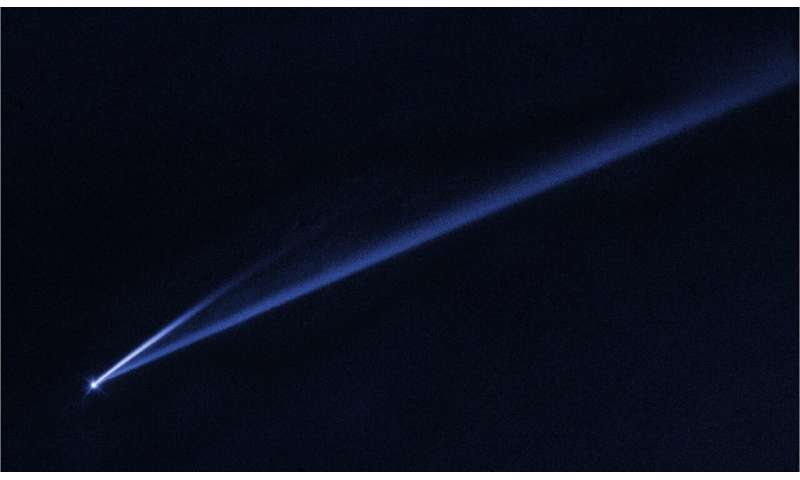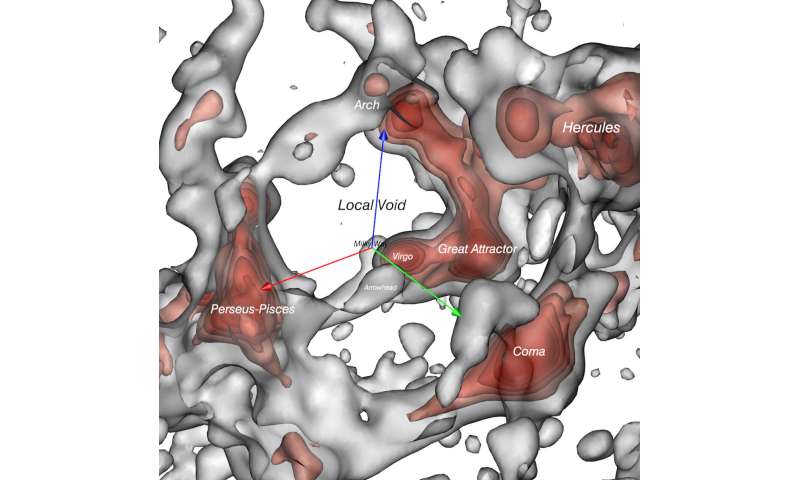The gravitational conflict that created the asteroid belt

The asteroid belt is the ring-shaped disc consisting of irregular small bodies called asteroids located between Mars and Jupiter. I have studied the origins of the asteroid belt in the the solar system and showed how the gravitational interaction between the two planets is involved in the formation of the asteroid belt, and how the gravitationally bound system becomes stable enough to avoid any disturbance in the distances of its astronomical bodies.
Creation of the asteroid belt
In the universe, we see that two gravitationally interacting bodies revolve around their common barycenter. In many star systems, the two stars show their clear motion around their barycenter, e.g., in binary star systems. This means that unlike the barycenter in terms of physics, the barycenter in astronomy is the point of balance of gravitational forces that exists between two celestial bodies. It can be said that the barycenter is a region in space where the gravitational forces exerted by two celestial bodies are perfectly balanced, and the two bodies revolve around it, maintaining a fixed distance from each other (as forces are balanced).
So the barycenter is the point at which the gravitational forces exerted by two objects are equal. But what happens when there is a system of more than two gravitationally interacting bodies in which one body is large enough to have strong gravitational influence on the others? The solar system is an example of such a system. Not only do the sun and planets interact; the planets gravitationally interact with each other.
Any two planets gravitationally interacting with each other will also form a barycenter between them. Taking the example of Mars and Jupiter, the barycenter is not considered to exist between them when they interact gravitationally because both of these planets revolve around the sun, which has a gravitational force strong enough to suppress the orbital motion of two planets around each other and compel them into its own orbit. So it can be said there is a formation of a barycenter between two planets that happen to interact gravitationally with each other.
The formation of the asteroid belt
By using the barycenter formula for two bodies, we find that the barycenter of Mars and Jupiter lies somewhere between their orbits (outside the body of Jupiter), which is the point of balance of their gravitational forces. This is actually a region where a strong effect of combined gravitational forces of Mars and Jupiter exists. As a result, any small body bound by its own weak gravitational force that passes through the barycenter of Mars and Jupiter will be disturbed violently.
This is deduced from the Lagrangian points. A Lagrangian point is the region in space where the combined effect of the gravitational forces of two large bodies balance and stabilize the relative motion of third very small body; thus, the reverse of it—i.e., the point of balance of two very large bodies (the barycenter) can violently disturb the motion of a third very small body due to the strong effect of combined gravitational forces present there.
In the case of Lagrangian points, the two large bodies balance the third very small body, while in case of barycenter, the two large bodies balance each other and can disturb the motion of third very small body. This means that the barycenter will act as a vortex in space in which any entering small body will be pulled apart in all directions by the combined gravitational forces of the two large bodies—in the case of the asteroid belt, rendered into pieces and small particles. This result is further verified from the observation of asteroid (6478) Gault made by Hubble Space Telescope in 2019 and verified by other observatories. A small asteroid was caught in the process of spinning so quickly that it threw off its own material.

Side results drawn from the study
- Today, we cannot observe the barycenter between different planets, but in a protoplanetary disk, ) by the time planets have already been formed, vortices are observed (the barycenter will act as a vortex and agitate the gas around it).
- The strength of the barycenter depends on the masses of the number of bodies, as the barycenter can be a point of balance of more than two bodies. The more massive the bodies, the stronger the region of the barycenter, such that no other body will form a stable condition there, and will be violently moved away. As a result, the barycenter of two or more very massive bodies will act as a void (with no or much less mass) due to the strong gravitational influence there. This result is verified by the observation of a large "local void" that borders the Milky Way galaxy.
- The barycenter in a gravitationally bound system (such as a galaxy or the solar system) will form a web-like structure. This web-like structure will maintain proper distance among celestial bodies, resembling the intricate web of a spider, which is least disturbed by the wind flowing through it due to its complex structure. The web structure of the gravitationally bound system prevents the expansion of the the universe from increasing distances among the astronomical bodies. Moreover, a tug-of-war effect created by multiple barycenters will force celestial bodies to revolve in the same direction as the other celestial bodies with which they create barycenters.

Conclusion
In the case of terrestrial planets, the above explained phenomenon might not be possible between Mercury and Venus, for example, because of their small masses—the combined effect of their gravitational forces is not strong enough to form any prominent belt of rocky pieces. But in case of massive gaseous planets, there lies the possibility in the form of Kuiper belt.
This story is part of Science X Dialog, where researchers can report findings from their published research articles. Visit this page for information about ScienceX Dialog and how to participate.
More information:
Rehman W (2019) Asteroid Belt Creation. J Astrophys Aerospace Technol 7: 166. www.omicsonline.org/open-acces … id-belt-creation.pdf
Bio:
Warda Rehman is pursuing a Bs in Space Science from Punjab University, Lahore, Pakistan. His research interests lie in the field of astrophysics and astronomy.